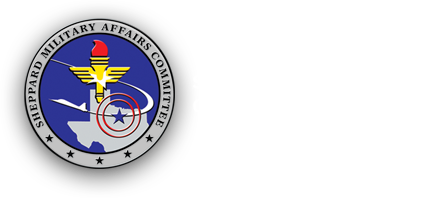DUNCAN – Local residents will be seeing a lot more of the Air Force now that it will be using Halliburton Field to provide touch-and-go landing and takeoff practice to new pilots, but the military says it will do everything it can within safety guidelines to minimize its impact on the airport and the community.
About 50 people attended a public meeting inside a hangar at the city airport Thursday to hear details about what to expect from the training mission.
Aircraft from Sheppard Air Force Base at Wichita Falls, Texas, already use local airspace for training, but the latest mission will be something new. Lt. Col. Jason Turner of the 80th Flying Training Wing explained that in years past Sheppard has used the old Army Airfield at Frederick for T-6 pilot trainees to practice touch-and-go landings and takeoffs.
But last May’s torrential rains wreaked havoc with the World War II-era runway at Frederick, buckling the concrete and making it unusable. The Air Force plans to repair the runway, he said, but that will take a year to two years.
In the meantime, the Air Force has had to find another way to accommodate about 7,000 T-6 training missions that used to go to Frederick each year. It has tried to squeeze the extra flights into Sheppard, but the congestion means that trainees will have 50 to 100 fewer takeoffs and landings.
So Sheppard looked around for an alternate site, a nearby one with a 4,000-foot runway, no restricted airspace (like that at Fort Sill), relatively low civil aviation usage and no control tower. Halliburton Field fit the bill perfectly.
Plans were drawn up and the airport board and Duncan City Council signed off on the program.
“It means the world to us to have you here
See Duncan, 6A
and have your support,” Turner told the friendly crowd on Thursday, and he provided an overview of the training program, as well as specifics on operations.
The T-6 is used for initial pilot training for the Euro-NATO Joint Jet Pilot Training Program, which trains pilots for a dozen NATO allies. After initial training, they graduate to the T-38 jet trainers often seen over the skies around Lawton.
The 190 pilots trained at Sheppard each year return to their home nations, where they play an important role in partnership with U.S. forces, he said.
The Air Force will have a footprint at the Duncan airport, but it will be small. Sheppard will have a mobile runway supervisory unit (RSU), a snow cone stand-size unit that will house two instructor pilots who will be in communication with the training flights. It also will station a fire truck with a crew of two at the airport, and the crew will provide training for local firefighters. From time to time the Air Force will park a plane at the airport.
Turner said the RSU will work hard to avoid conflicts with civilian aviation, which will have priority over the military flights.
Flights into and out of the airport will use two approaches. The preferred one is from the south, which largely avoids the city of Duncan proper, but it can’t be used when there is a tailwind of more than 20 knots. When those conditions occur, aircraft will approach from the north and more people will notice them.
Shared from The Lawton Constitution.
